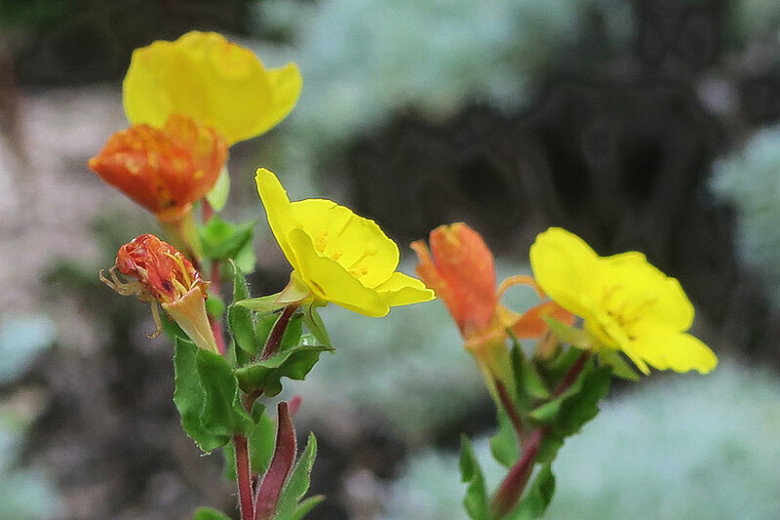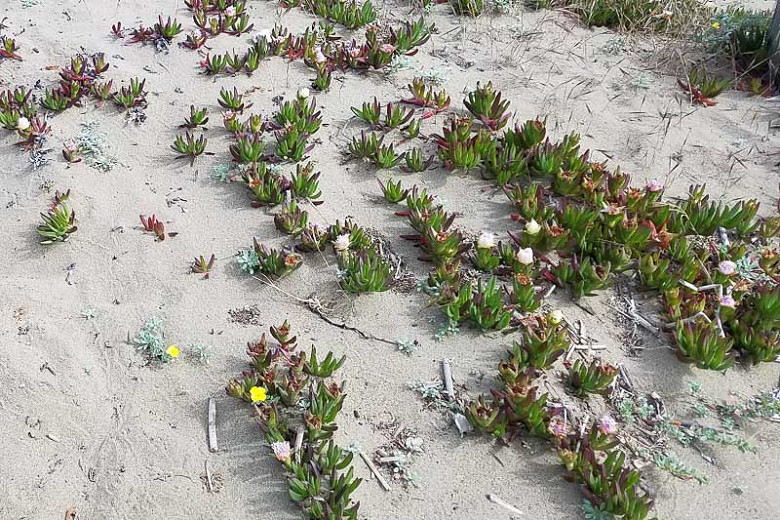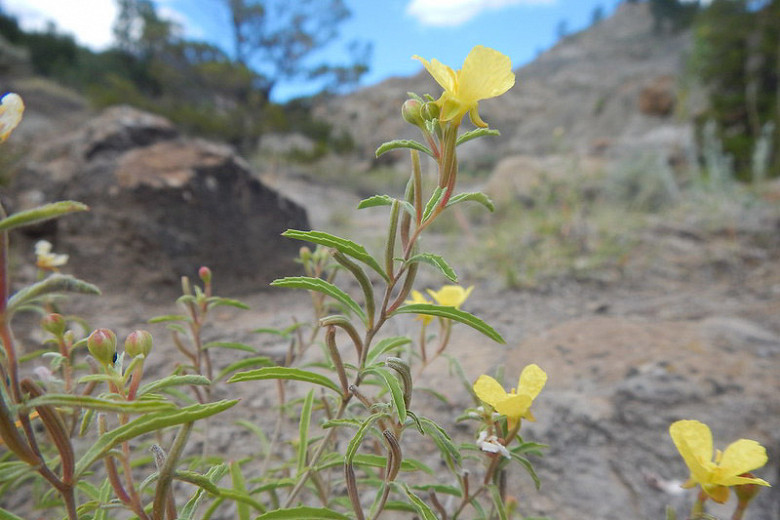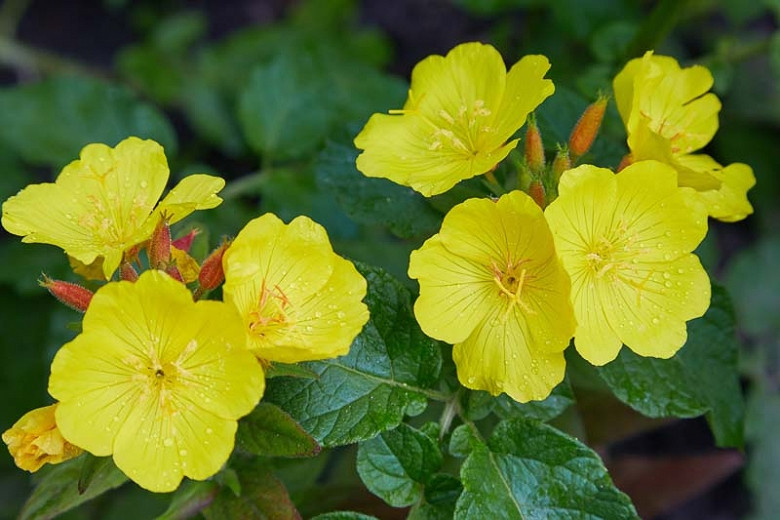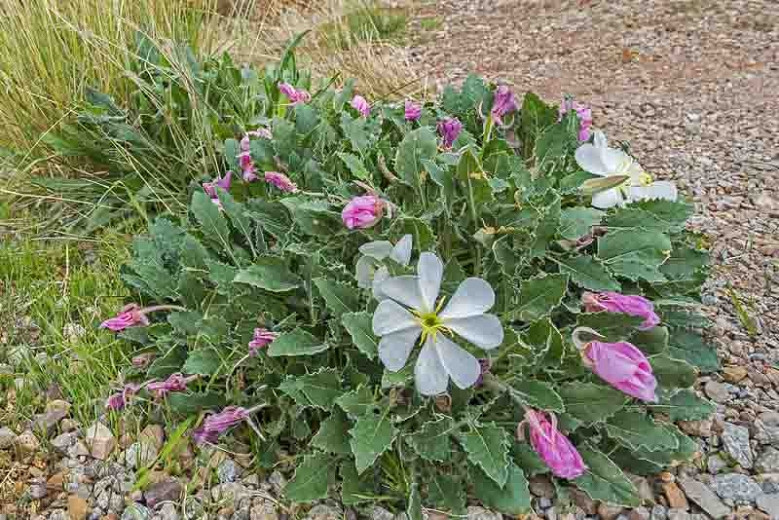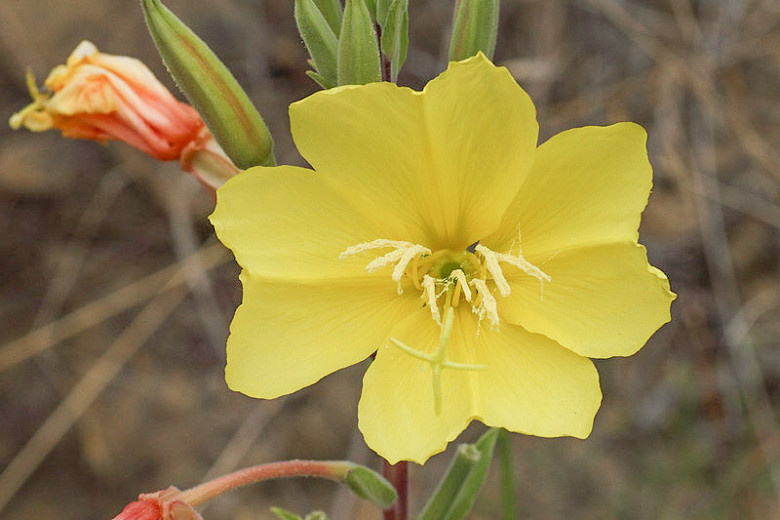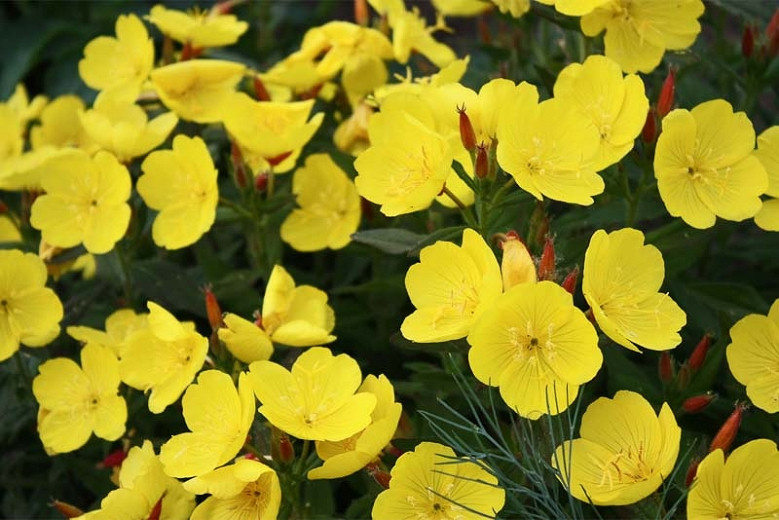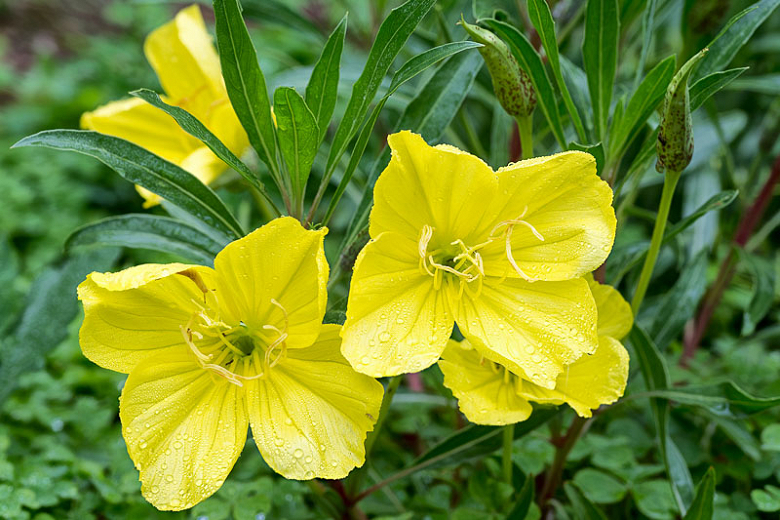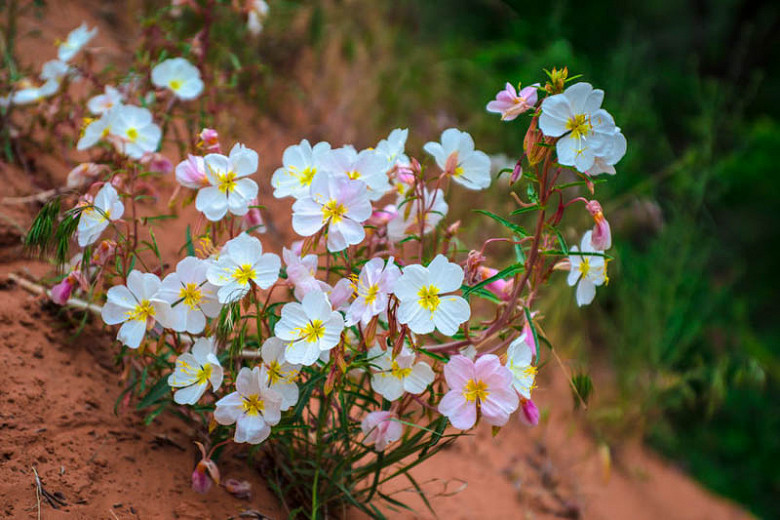Camissoniopsis cheiranthifolia (Beach Primrose)
One of the few plants that thrive in the coastal strand environment, Camissoniopsis cheiranthifolia (Beach Primrose) is a low-growing, short-lived perennial subshrub forming dense mats of silvery gray-green, smooth-margined leaves. From early spring to mid-summer, a profusion of showy, clear yellow flowers, 1-1.5 in. across (2-3 cm), each with four bright yellow petals, open in the morning. Borne in the leaf axils of wiry stems that hug the ground, the blossoms fade to shades of red or orange as they age. Attractive to butterflies, they give way to slim, four-sided capsules that split open when ripe, allowing the seeds to be dispersed by gravity and animals. Native to dunes and sandy soils of coastal California and Oregon, Beach Primrose is adapted to one of the harshest environments on earth. Plants must survive salt spray, wind, and the scorching temperatures of sand under the summer sun. A dense covering of pale hairs protects the plant from the hot summer sun and a deep taproot anchors it against wind and shifting sand. Often used in dune restoration projects, Beach primrose is a valuable plant for hot, dry locations where it provides a bold splash of color, before going dormant during the hot, dry months of summer. Recommended for native plant gardens, especially in sandy soil, Beach Primrose may flower all year if given a bit of summer water.
- Grows up to 3-4 in. tall (7-10 cm) and 6-36 in. wide (15-90 cm). This plant will self-seed in the garden.
- Best in full sun in sandy, well-drained soils. Little supplemental watering is necessary once the plant is established. Drought and salt spray tolerant.
- No serious pest or disease issues.
- Propagate by seed.
- Native to open dunes and sandy soils of coastal California and Oregon.
Requirements
| Hardiness | 8 – 10 |
|---|---|
| Climate Zones | 14, 15, 16, 17, 18, 19, 20, 21, 22, 23, 24 |
| Plant Type | Perennials, Shrubs |
| Plant Family | Oenothera – Primroses – Sundrops |
| Exposure | Full Sun |
| Season of Interest | Spring (Early,Mid,Late)Summer (Early,Mid) |
| Height | 3" – 4" (7cm – 10cm) |
| Spread | 6" – 3' (15cm – 90cm) |
| Spacing | 12″ – 36″ (30cm – 90cm) |
| Water Needs | Low |
| Maintenance | Low |
| Soil Type | Sand |
| Soil pH | Acid, Alkaline, Neutral |
| Soil Drainage | Well-Drained |
| Characteristics | Showy, Evergreen |
| Native Plants | United States, California, Rocky Mountains, Utah, Southwest, Nevada, Arizona |
| Tolerance | Drought, Dry Soil, Salt |
| Attracts | Butterflies |
| Garden Uses | Ground Covers |
| Garden Styles | Coastal Garden, Informal and Cottage |
